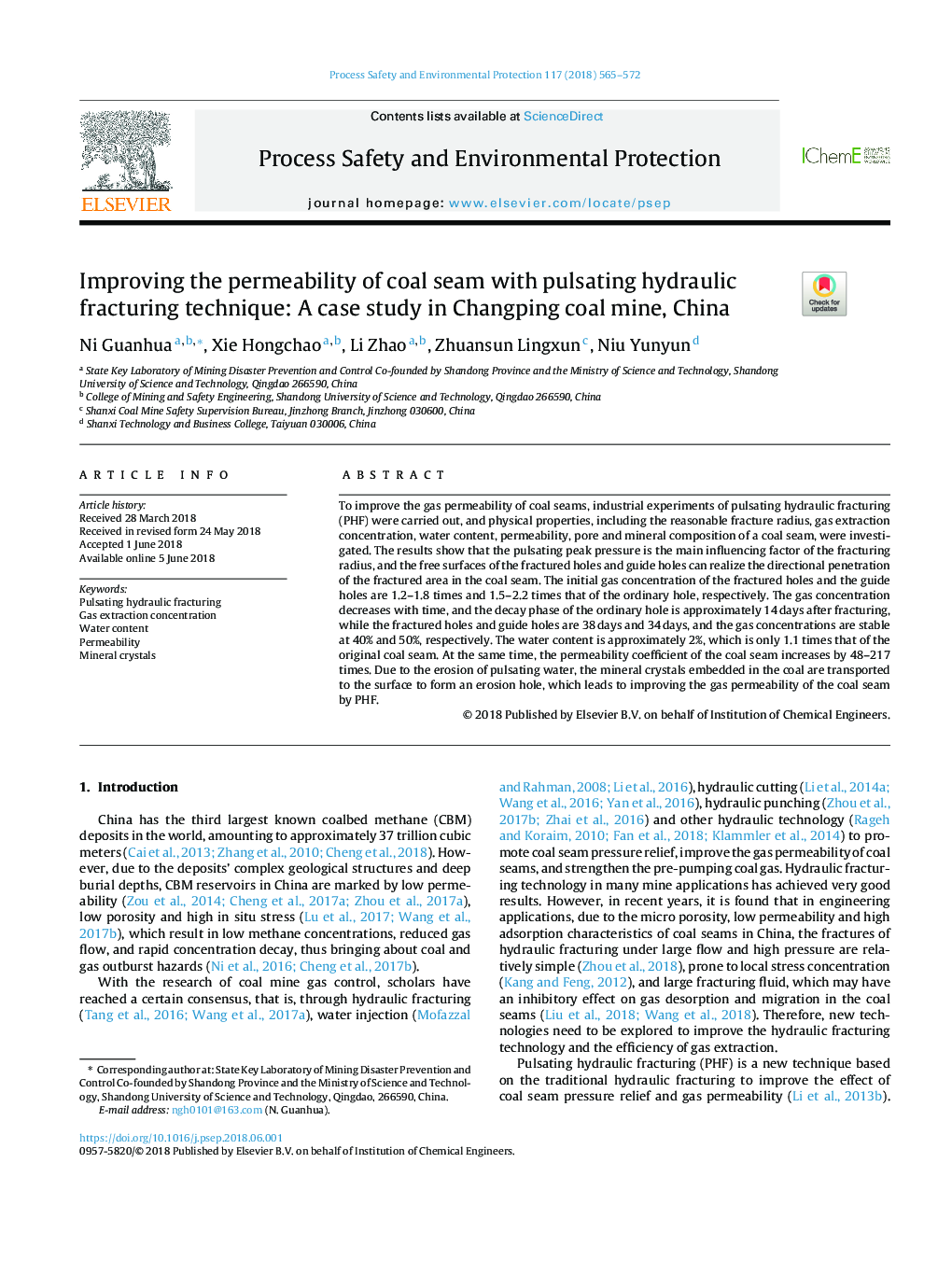| Article ID | Journal | Published Year | Pages | File Type |
|---|---|---|---|---|
| 6974010 | Process Safety and Environmental Protection | 2018 | 8 Pages |
Abstract
To improve the gas permeability of coal seams, industrial experiments of pulsating hydraulic fracturing (PHF) were carried out, and physical properties, including the reasonable fracture radius, gas extraction concentration, water content, permeability, pore and mineral composition of a coal seam, were investigated. The results show that the pulsating peak pressure is the main influencing factor of the fracturing radius, and the free surfaces of the fractured holes and guide holes can realize the directional penetration of the fractured area in the coal seam. The initial gas concentration of the fractured holes and the guide holes are 1.2-1.8 times and 1.5-2.2 times that of the ordinary hole, respectively. The gas concentration decreases with time, and the decay phase of the ordinary hole is approximately 14Â days after fracturing, while the fractured holes and guide holes are 38Â days and 34Â days, and the gas concentrations are stable at 40% and 50%, respectively. The water content is approximately 2%, which is only 1.1 times that of the original coal seam. At the same time, the permeability coefficient of the coal seam increases by 48-217 times. Due to the erosion of pulsating water, the mineral crystals embedded in the coal are transported to the surface to form an erosion hole, which leads to improving the gas permeability of the coal seam by PHF.
Keywords
Related Topics
Physical Sciences and Engineering
Chemical Engineering
Chemical Health and Safety
Authors
Ni Guanhua, Xie Hongchao, Li Zhao, Zhuansun Lingxun, Niu Yunyun,
